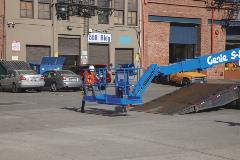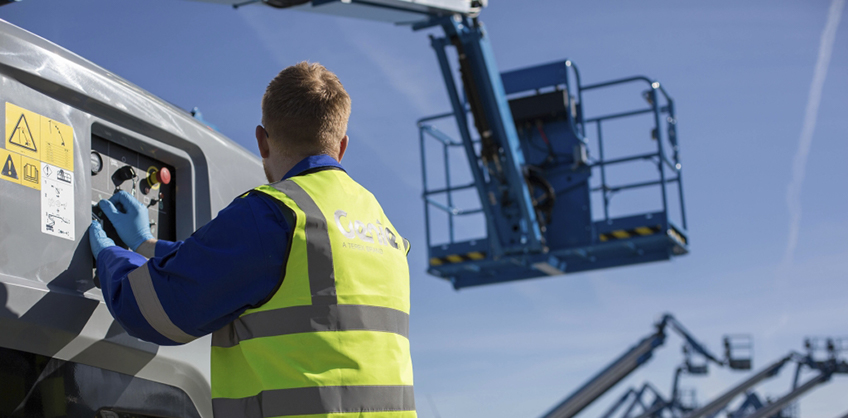Recommendations for Preventing the Spread of COVID-19 on Aerial Jobsites
by Scott Owyen - Director of Training On Jun 11, 2020, 03:00 AM
Subscribe To Aerial Pros
Filter by tags
The ongoing COVID-19 pandemic globally has certainly caused a lot of disruptions in the aerial access industry. For several weeks, aerial jobsites shutdown to mitigate the risk of people contracting the virus. Now, as jobsites are beginning to reopen worldwide, and jobsite superintendents and fleet managers need to think about how best to protect workers and prevent the spread of the virus.
The first, and number one, goal of all aerial jobsites should be to provide a safe and productive work environment for workers and equipment. In the case of COVID-19, jobsite superintendents and fleet managers on aerial jobsites need to ensure that their workers are taking extra precautions to remain healthy and performing because, according to the Center for Disease Control (CDC), as there is currently no vaccine to prevent coronavirus disease 2019 (COVID-19). This means that the best way to prevent illness is to avoid being exposed to the virus1.
Know how it spreads:
- The virus is thought to spread mainly from person-to-person.
- Between people who are in close contact with one another (within about 6 ft / 2 m).
- Through respiratory droplets produced when an infected person coughs, sneezes or talks.
- These droplets can land in the mouths or noses of people who are nearby or possibly be inhaled into the lungs.
- Some recent studies have suggested that COVID-19 may be spread by people who are not showing symptoms.
- Wash your hands often with soap and water for at least 20 seconds especially after you have been in a public place, or after blowing your nose, coughing, or sneezing.
- If soap and water are not readily available,use a hand sanitizer that contains at least 60% alcohol. Cover all surfaces of your hands and rub them together until they feel dry.
- Avoid touching your eyes, nose, and mouth with unwashed hands.
- Avoid close contact with people who are sick, even inside your home.If possible, maintain 6 ft (2 m) between the person who is sick and other household members.
 Put distance between yourself and other people outside of your home.
Put distance between yourself and other people outside of your home.
- Remember that some people without symptoms may be able to spread virus.
- Stay at least 6 ft (2 m) —about 2 arms’ length —from other people.
- Do not gather in groups.
- Stay out of crowded places and avoid mass gatherings.
- Keeping distance from others is especially important for people who are at higher risk of getting very sick.
- You could spread COVID-19 to others even if you do not feel sick.
- Everyone should wear a cloth face cover when they have to go out in public, for example to the grocery store or to pick up other necessities.
- Cloth face coverings should not be placed on young children under age 2, anyone who has trouble breathing, or is unconscious, incapacitated or otherwise unable to remove the mask without assistance.
- The cloth face cover is meant to protect other people in case you are infected.
- Do NOT use a facemask meant for a healthcare worker.
- Continue to keep about 6 feet between yourself and others. The cloth face cover is not a substitute for social distancing.
- If you are in a private setting and do not have on your cloth face covering, remember to always cover your mouth and nose with a tissue when you cough or sneeze or use the inside of your elbow.
- Throw used tissues in the trash.
- Immediately wash your hands with soap and water for at least 20 seconds. If soap and water are not readily available, clean your hands with a hand sanitizer that contains at least 60% alcohol.
- Clean AND disinfect frequently touched surfaces daily. This includes tables, doorknobs, light switches, countertops, handles, desks, phones, keyboards, toilets, faucets and sinks.
- If surfaces are dirty, clean them. Use detergent or soap and water prior to disinfection.Then, use a household disinfectant. Most common EPA-registered household disinfectants will work.
1https://www.cdc.gov/coronavirus/2019-ncov/prevent-getting-sick/prevention.html


